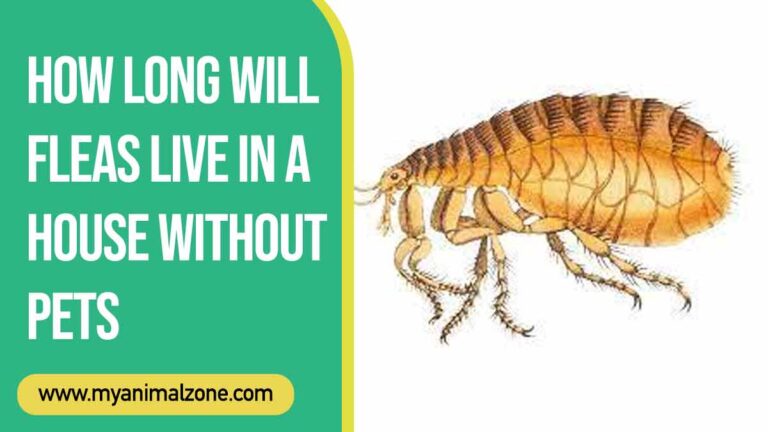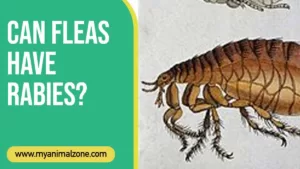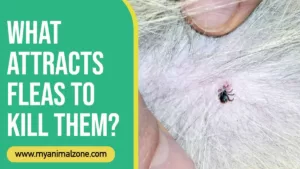Fleas are parasites that feed on the blood of animals, including humans, and are most often found in areas where furry animals are abundant, such as households with pets like cats and dogs. Fleas can also be found in homes without pets and can survive for several weeks without their preferred host.
Understanding what fleas need to survive and how long they will live in a house without pets is important for preventing infestations. This guide will outline the basics of flea life cycles and cover effective methods for exterminating them in pet-free and pet-occupied homes.
So how long will fleas live in a house without pets? Fleas can live for about 100 days without a host. However, they can survive much longer if they have access to food sources like humans or other animals. To keep your home free from fleas and other pests, it’s important to practice good hygiene and vacuum regularly.
Flea Lifecycle
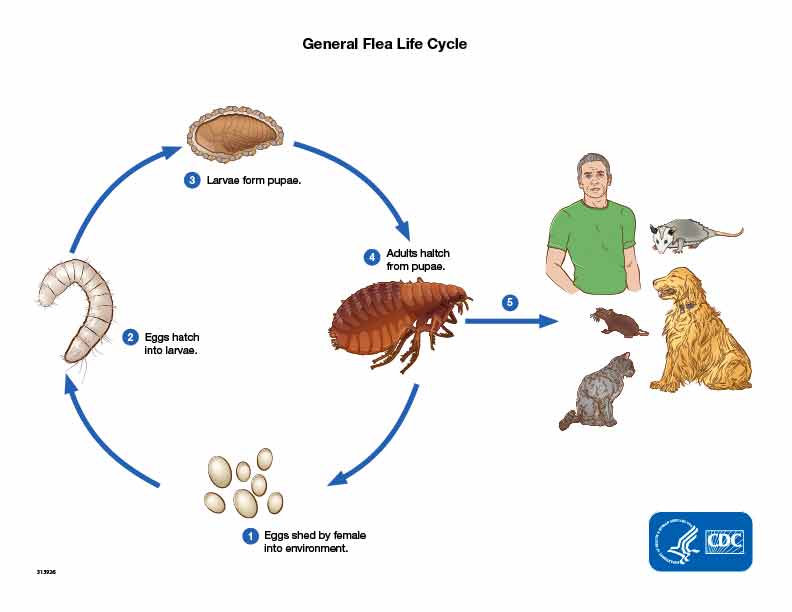
Fleas are one of the most annoying pests affecting humans and animals. They are small, hardy insects that can reproduce quickly, making them difficult to control.
To effectively control fleas in your home, it is important to understand their lifecycle. This article will cover the lifecycle of fleas, as well as how long they can live in a house without pets.
Egg Stage
The flea’s life cycle begins at the egg stage. At this stage, female fleas lay their eggs after mating with male fleas. Female fleas can lay up to 50 eggs daily and approximately 2,000 in a lifetime. These tiny, white oval-shaped eggs measure about 0.5mm long and are easily dislodged from a pet’s fur or skin due to their sticky surface. When dropped, they can hop or roll away using their spiny legs.
As no larva is responsible for hatching the egg, the eggs will hatch in 1-10 days, depending on the ambient temperature of the processing environment. Warm weather can significantly reduce this time, while cold climates will extend it. Room temperature offers optimal conditions for rapid maturing and hatching of flea eggs – within two to four days in most cases.
Although female fleas can survive off a blood meal from animals for up to several weeks in some cases, as long as there are no suitable hosts present, such as pets or wildlife, infestations in households without pets may remain small or become eliminated for lack of reproduction opportunity.
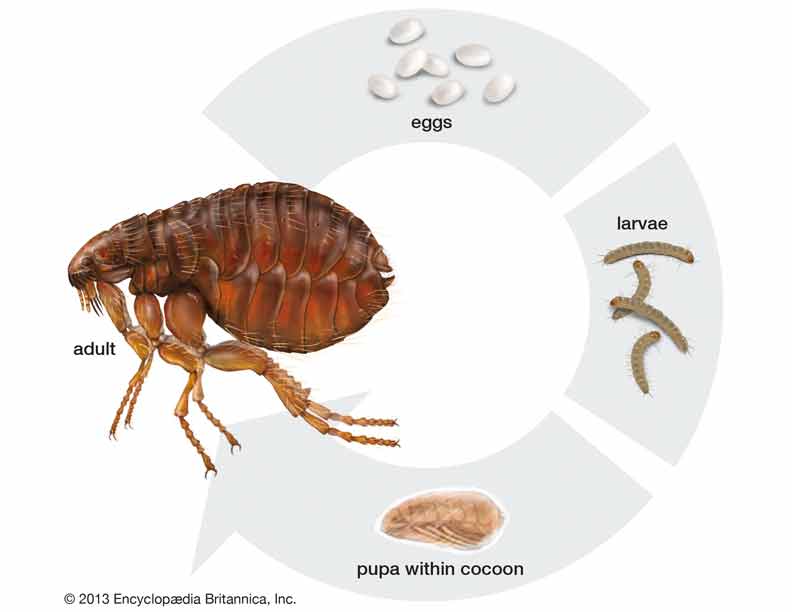
Larval Stage
The flea lifecycle can vary depending on the environment. In favorable conditions, the entire lifecycle can be completed in as little as two weeks, but the cycle can take up to one year if environmental conditions are unfavorable.
The larval stage of the flea’s life cycle begins when an adult female flea lays eggs on a host animal or in an area frequented by animals. Most eggs will hatch within 1–10 days of being laid, and once they have hatched, they enter the larval stage.
During this stage, larvae feed on organic material found in their environment, such as dead insects, animal skin cells, and grains from food particles that have dropped from pets and humans. Flea larvae do not feed on blood. Larvae will typically remain in this stage for 5–11 days before pupating into adults. However, fleas avoid light and prefer to hide under carpet fibers or other dark places where it is cool and moist.
For the fleas to complete their life cycle, a host must be available for adult fleas to find; without a host, adult fleas will soon die, rendering further development of new generations impossible.
Pupal Stage
The pupal stage of the flea’s lifecycle is the longest and most inactive. Once the fully-developed larva has found a suitable pupation site, such as carpet or sofa fibers, it forms a cocoon. It enters a state of suspended animation while it undergoes its final molt. The pupal stage generally lasts between three to four weeks, when the flea is relatively safe from contact insect killers.
At the end of this period, conditions such as temperature and humidity or tactile stimulus from potential hosts vibrating near the cocoon trigger emergence into adulthood.
Adult Stage
The adult stage of the flea lifecycle can be further divided into two parts: searching for a host and feeding on its host. The period a flea spends as an adult depends largely on the presence or absence of its preferred host.
Without a warm-blooded host, adult fleas may live up to several weeks or even months indoors. They can survive from stored energy reserves built up from their last feed and through their highly efficient metabolic rate.
When a suitable host is present, the adult flea will seek to attach itself and bite at any opportunity. Once attached, the female flea will immediately begin laying eggs within 24 hours – though the “blood-feeding phase” can take up to 20 minutes for larger species like dog or cat fleas. Upon completion of her feed, a female can lay over 1000 eggs in her lifetime.
Adult females must consume blood before they can reproduce. Therefore, if you’re dealing with an inside infestation, it’s likely that somewhere nearby (within your house) is an animal host providing nutrition – even if that animal is no longer living at home! If your pets fall victim to fleas, it’s important to remember this part of their lifecycle and treat them accordingly while taking steps to ensure that they don’t become re-infested quickly after treatment ceases.
Fleas Without Pets
Fleas can be a nuisance for any home, whether you have pets or not. For example, fleas may enter the home without pets, such as pets that have recently been in contact with other animals, and may stay and breed in the home even without a pet to feed from. So, how long can fleas survive without a pet host?
Various factors can affect the longevity of fleas in an empty house:
Sources of Food
Fleas without pets can survive and infest a home, but they need a food source. Unfortunately, fleas may consume other sources of food, such as the blood of humans or other animals. They can be present year-round, particularly in warm homes and climates.
Possible sources of food for fleas without pets can include:
- Dead insects and rodents were found in the home.
- Fleas may also seek moisture from damp towels, carpets, and furniture to enhance their chances of survival.
- Unfortunately, food is not their only source of sustenance – human hair or fur from visiting guests are also welcomed sources of nutrition for these parasites.
In addition to these potential sources of nutrition, fleas have the ability to reproduce rapidly without direct contact with pets. Adult female fleas can lay up to 50 eggs daily, hundreds within their lifespan. Once hatched, larvae develop quickly into adulthood with the availability of a steady diet provided by any source mentioned above. As such, you must take necessary precautions if you suspect an infestation in your home, even without a pet.
Lifespan
Fleas are resilient and can survive for long periods without a host. If their source of food, moisture, and shelter remains available, the adult fleas in your home can live up to 9-12 months. In comparison, the lifecycle for fleas on pets is shorter and includes egg, larval, pupal, and adult stages. The most common flea found in residential areas is the cat flea–it mainly infests cats and dogs but will feed on humans if needed.
On average, a female flea will lay approximately 25-50 eggs per day during her life, which can range from two weeks to one month under ideal conditions. In carpets or other protected living areas without regular vacuuming or steam cleaning, these eggs may survive up to eighteen months before they hatch, making it easier to eliminate them without professional help.
Under optimal conditions (i.e., temperature between 77F–86F with humidity hovering around 70%), larvae will develop within 1-2 weeks though they may survive much longer without a host or food source in protected environments like carpets or furniture stuffing; even so, the life span of these young can range from days to weeks depending on variables such as air quality and temperature.
Once pupae reach maturity (usually takes another two weeks), they’ll remain dormant until prodded by physical movements nearby. At that point, they transform into adults ready to seek blood meals, allowing them to bring new life into their short lifespans. Adult fleas have an average survival rate of only six days when not attached to a host body for food availability.
Prevention and Control
Fleas can persist in a home even without a host animal present. However, it is important to understand fleas’ lifecycle, habits, and environment to avoid or eliminate flea infestations.
In this section, we will talk about prevention and control measures you can take to protect your house from these pests:
Vacuum Regularly
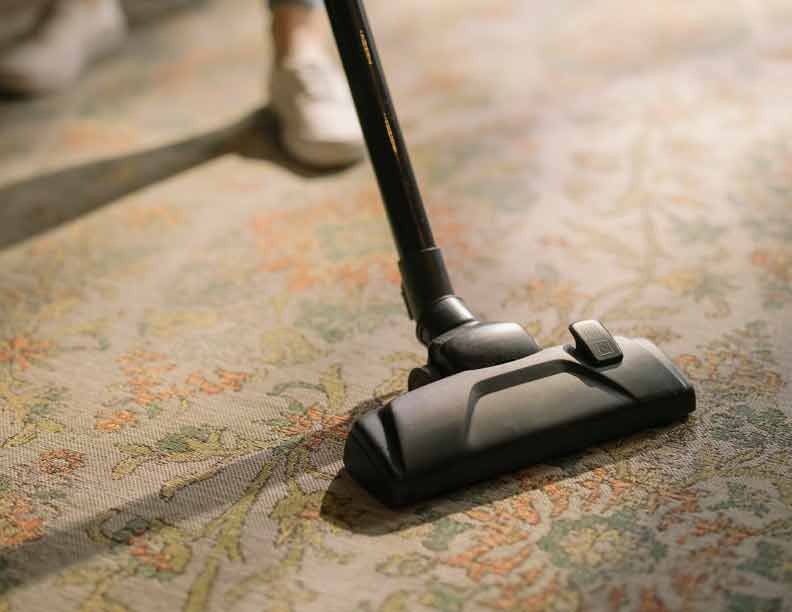
Vacuuming your carpets, rugs, and furniture several times a week is an important part of flea control. Adult fleas can live for weeks without eating, so vacuuming will help remove them before their eggs can hatch. Instead, regularly empty the vacuum bag to prevent any larvae from escaping into your home.
Additionally, vacuuming all visible areas of your home helps prevent skin irritation from bites from adult fleas. Vacuuming also agitates immature fleas, causing them to emerge from hiding spots and move into the open, where a secondary treatment method can more easily eliminate them.
When possible, use a bagged vacuum to seal in any potential fleas that may have been collected during cleaning. Before discarding the bag or emptying the canister contents outdoors or into an outdoor trash container,
- dispose of them in a sealed garbage bag
- thoroughly wash out the vacuum canister with hot water and soap if possible.
Use Insecticides
Insecticides are one of the most effective ways to kill and control fleas in your home. Insecticides explicitly labeled for flea control should be used, as some insecticides used for other pests may not provide adequate control of fleas or may even make the situation worse. Most professional pest management companies use insecticide formulations that work against all stages of the flea life cycle and against adult fleas. In addition, many formulations labeled for flea control contain both adulticide and an insect growth regulator (IGR) to eliminate current and prevent future infestations.
The best time to apply an insecticide is during the early winter season when temperatures are cooler and before any sign of a flea problem appears. In cases where a flea problem already exists, bactericidal products can be applied around entryways after vacuuming to break up larval fleas and discourage re-infestation. Dust applied around carpeting, between floor brackets, under heavy furniture, and under carpets also has good residual effectiveness. In addition, your local licensed pest management professional can offer additional information regarding proper application techniques and product selection.
Wash Bedding and Soft Furnishings
Adult fleas can live up to two weeks without a blood meal. To get rid of these pests, cleaning all of the fabrics and materials affected by the fleas is essential.
- Wash bed sheets, pillowcases, blankets, and clothing in hot water and place them in a hot dryer for at least 20 minutes to eliminate any eggs and larval stages.
- Vacuum all carpets, rugs, and upholstery, and discard the vacuum bag after use if you suspect an infestation.
- Also, mop hard floors with soapy water, a surface-safe insecticide, or even boric acid to kill fleas in all life stages.
Conclusion
In summary, in optimal conditions, fleas can survive without a host for a few months, from one to three months. Nevertheless, it is essential to note that female fleas must have a blood meal from a host for egg production and laying eggs. Therefore, if there are no other animals in the house and no people entering your property regularly, adult fleas should eventually die out as they will not have access to their food source.
Furthermore, suppose you think you may have an infestation of fleas in your home or on your property even without pets present or regular visitor traffic. In that case, it may be beneficial to contact a pest control expert who can advise you on the best treatment measures and provide you with further information on the life cycle of fleas and other similar pests so that you can prevent future infestations.
Frequently Asked Questions
Q1: How long can fleas live in a house without pets?
A1: Fleas can live in a house without pets for up to a year in favorable conditions.
Q2: What conditions do fleas need to survive in a house without pets?
A2: Fleas need a warm, humid environment and food sources such as human or pet skin flakes to survive in a house without pets.
Q3: What can I do to prevent fleas in my house if I don’t have any pets?
A3: Keeping your house clean and debris-free can help prevent fleas from living in your home. Vacuuming regularly will also help reduce the flea population if they are present.

